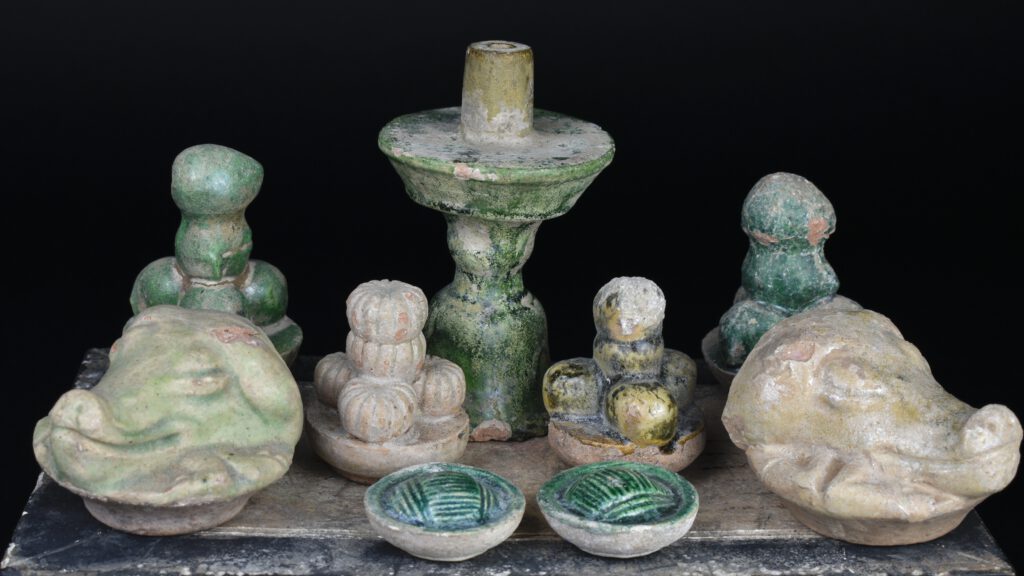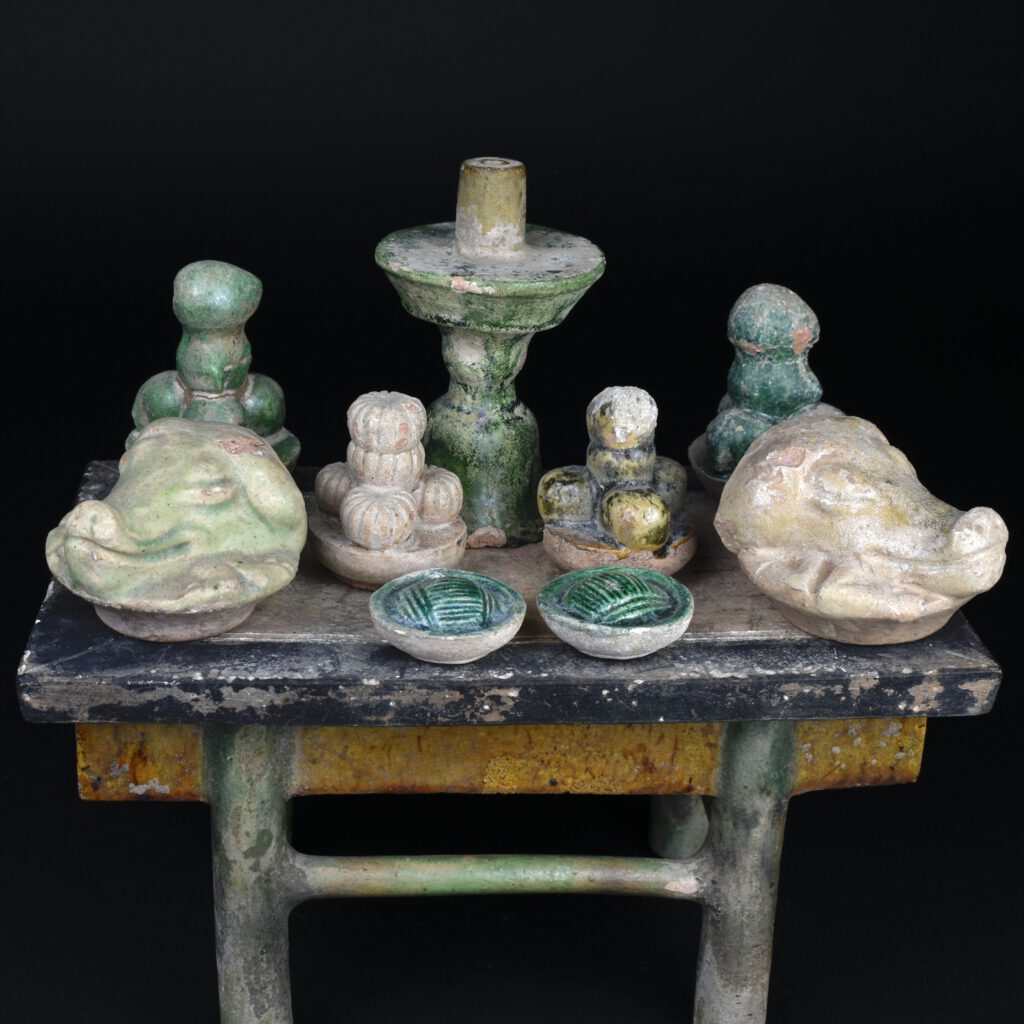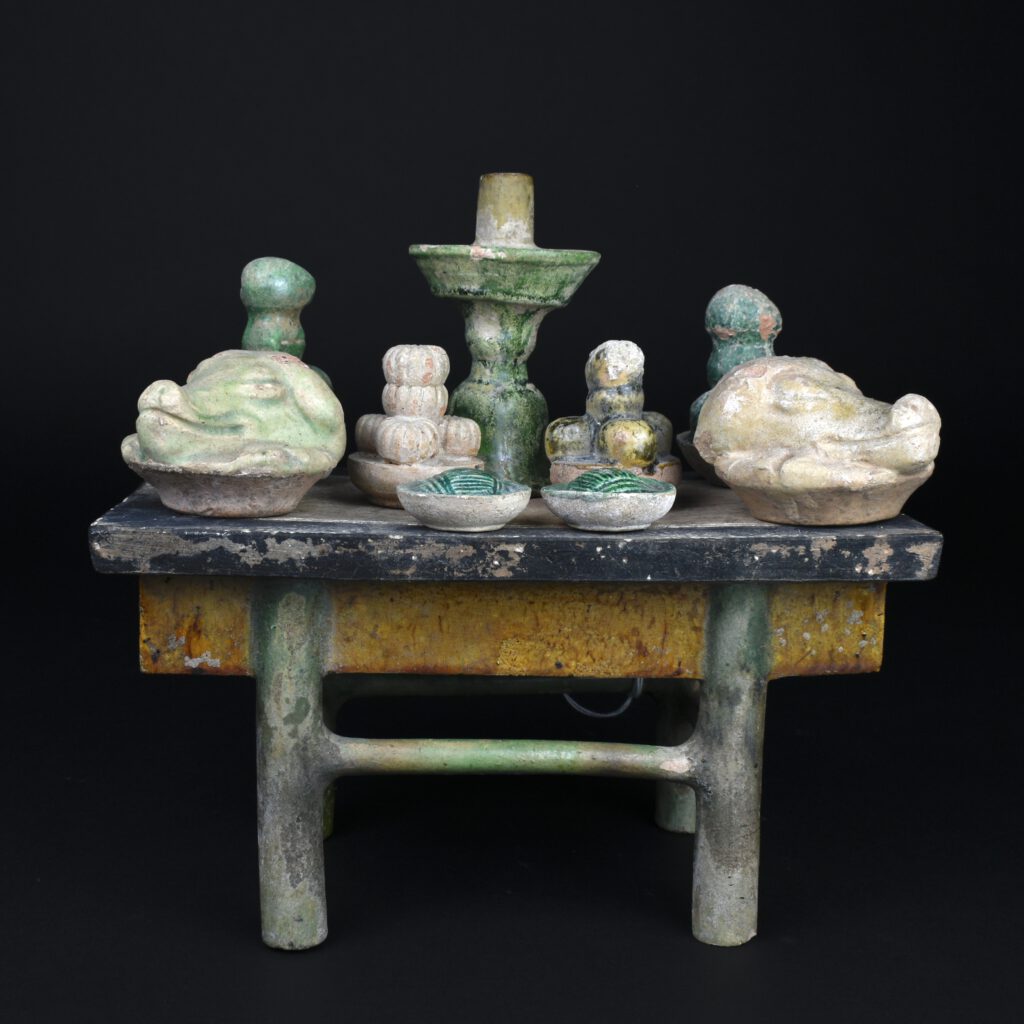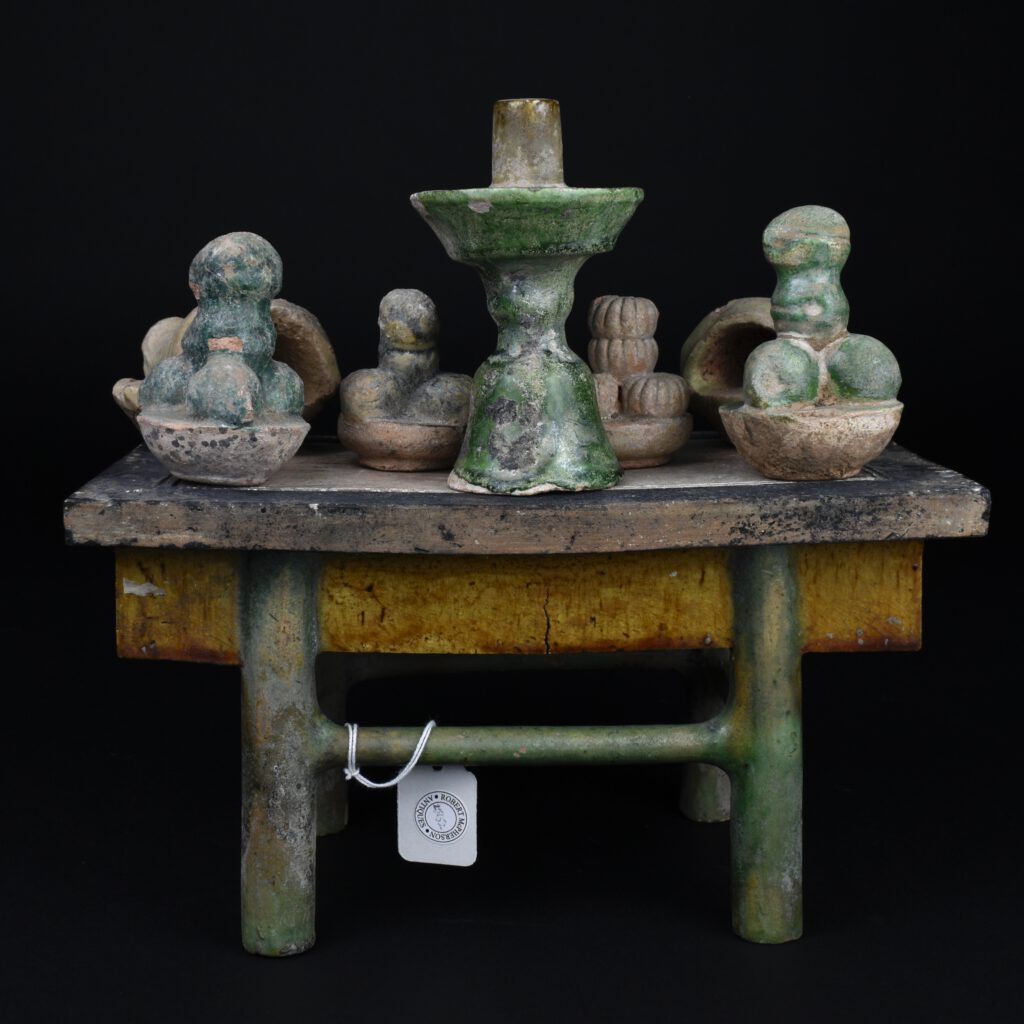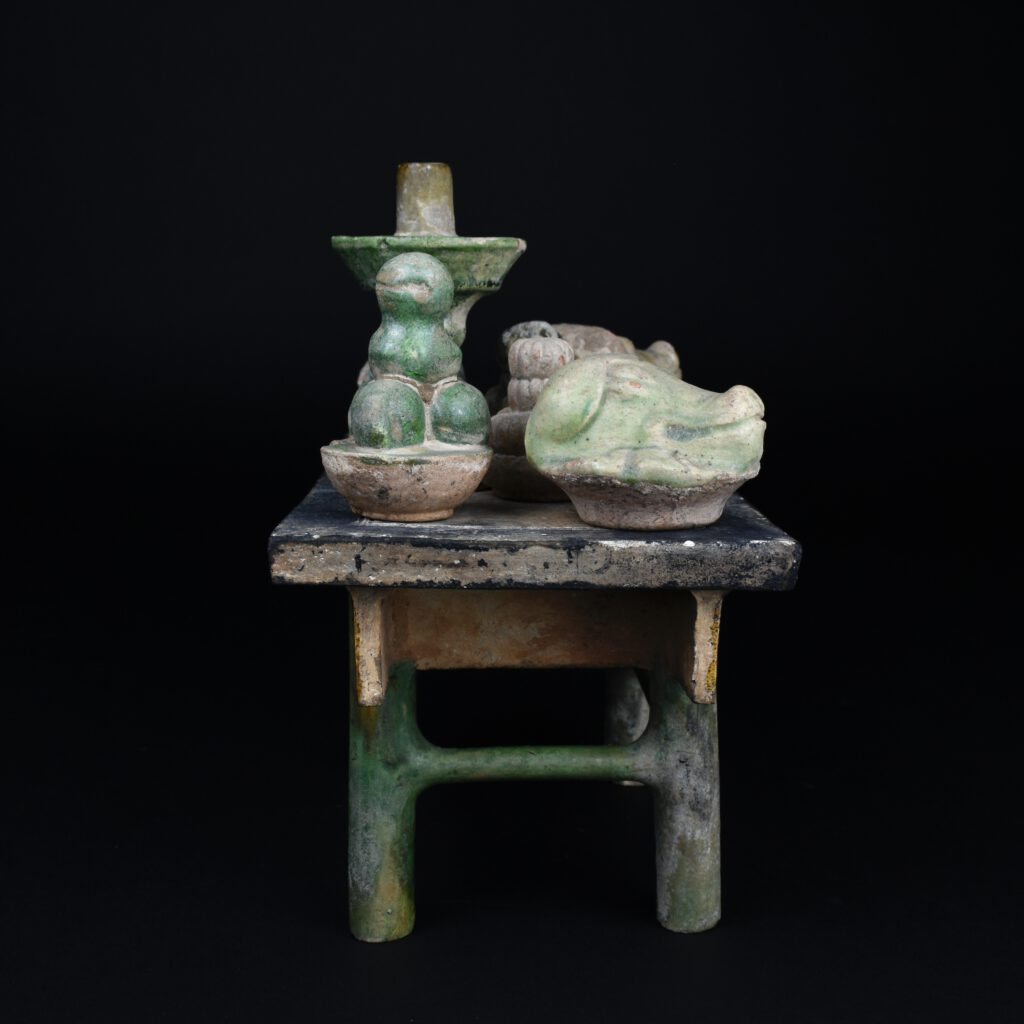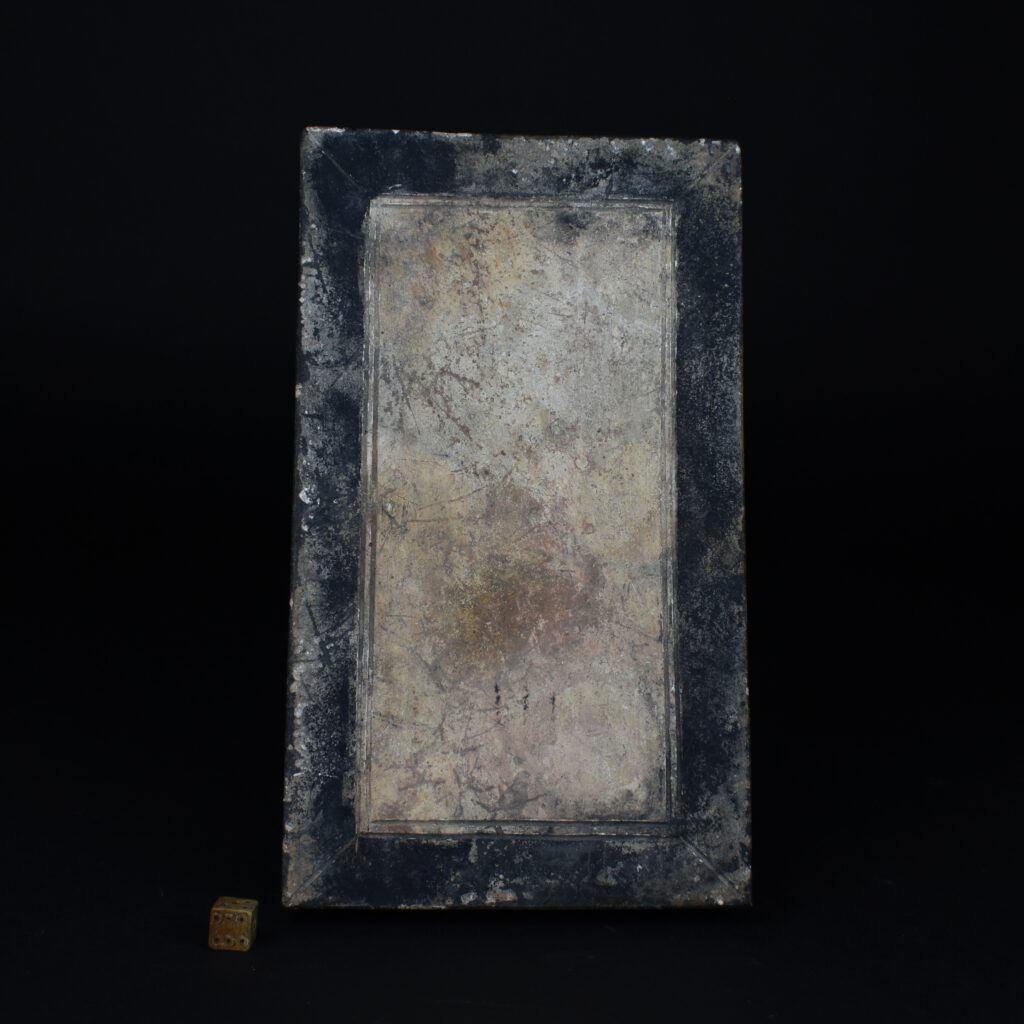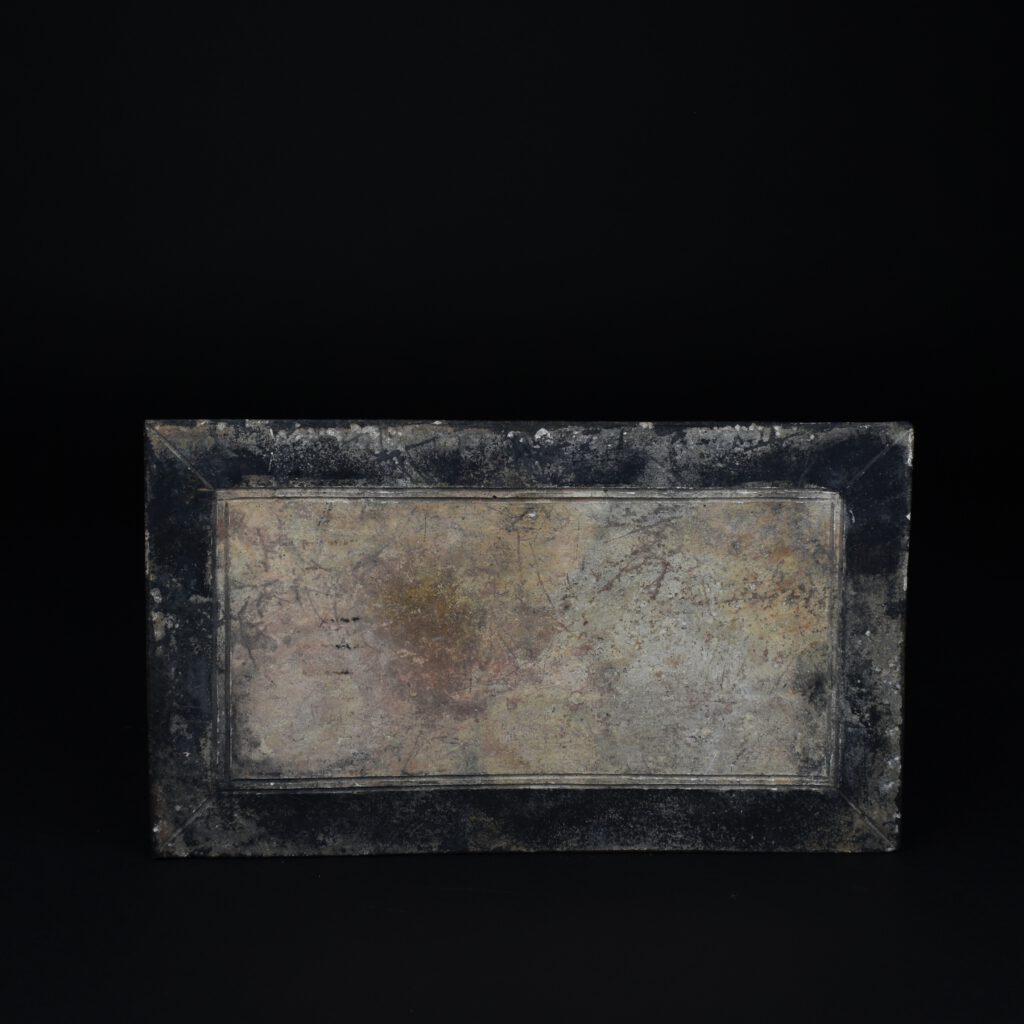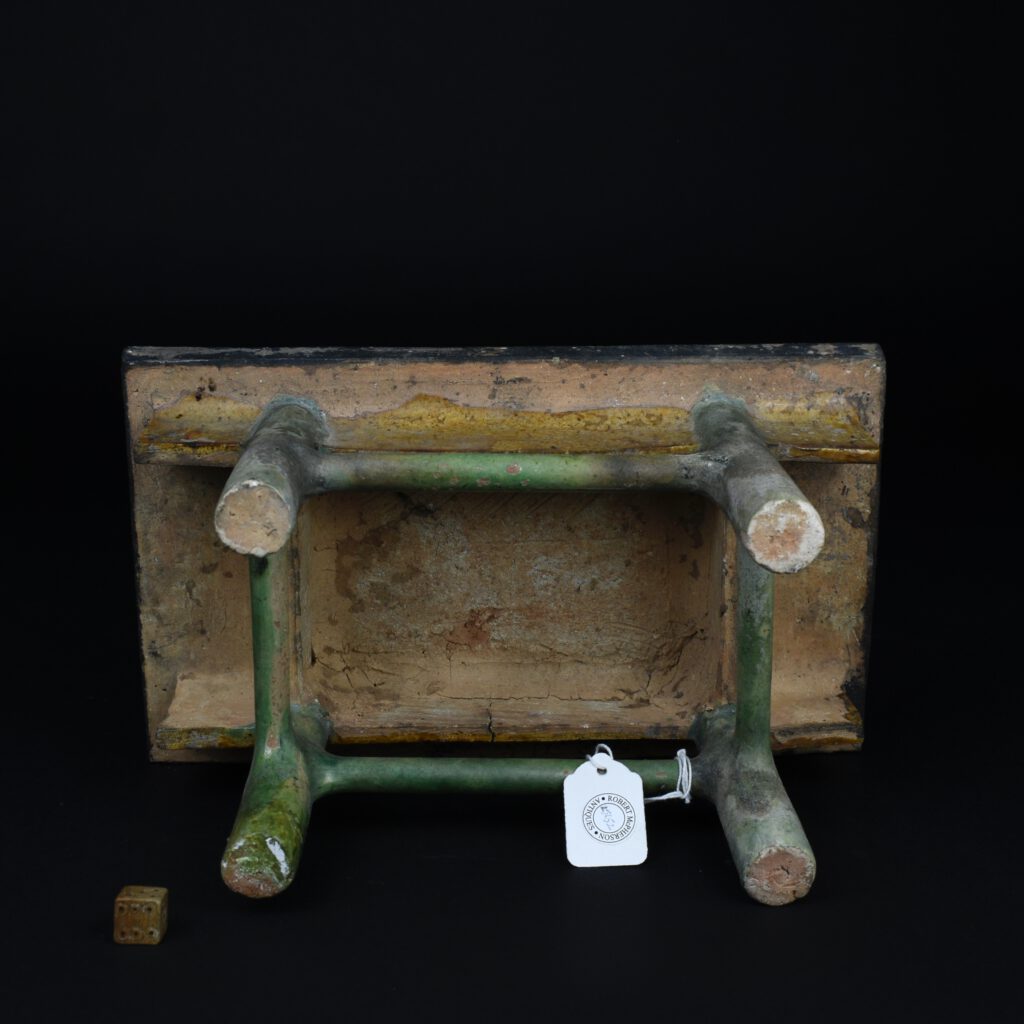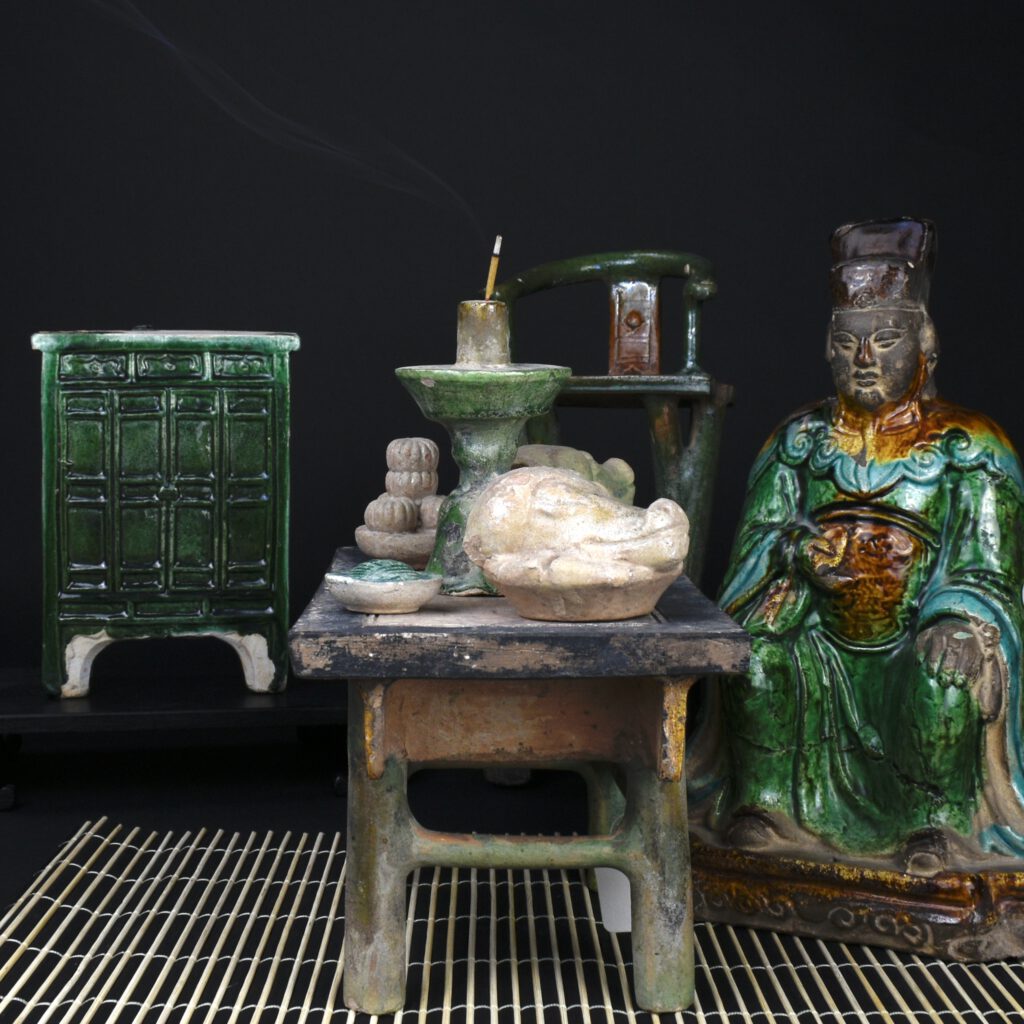
A 16th Century Ming Pottery Model of an Altar Table with Food
A 16th Century Ming Pottery Altar Table with Food, North China c.1550-1600. This late Ming pottery object is very similar to one purchased by the Victoria and Albert Museum in 1996 from Robert McPherson Antiques. It is on display at the Victoria and Albert Museum in London, it can be seen in the China Gallery on the ground floor of the Museum in the T.T. Tsui Gallery. This piece is an example of Mingqi, objects made specifically for burial, to be taken with you to the afterlife. The `Terracotta Army` is the most famous example of this type of burial object. Mingqi objects represented people, houses, farms, granaries, livestock and indeed anything important from this world that would give you comfort and status in the next. The `Terracotta Army` were made life size and on a vast scale, reflecting the importance of the first emperor of China but most Mingqi objects were small models, far smaller than the object or indeed person they were meant to represent. Mingqi ceramics were not the only goods to appear in early Chinese tombs, objects that functioned were also buried, some of these had clearly been worn or even damaged, presumably these objects were prized possessions belonging to the deceased that might have been used on a daily basis.
SOLD
- Condition
- The table is in excellent condition retaining much of the black unfired pigment around the edge. One of the food offerings on a plate has got a chip filled, minor chips.
- Size
- Table : length 23.cm (9 inches), height 15.2cm (6 inches)
- Provenance
- From a Private English Collection
- Stock number
- 25652
- References
- This late Ming pottery object is very similar to one purchased by the Victoria and Albert Museum in 1996 from Robert McPherson Antiques. It is on display at the Victoria and Albert Museum in London, it can be seen in the China Gallery on the ground floor of the Museum in the T.T. Tsui Gallery.
Information
A Ming Table in the Victoria and Albert Museum
Purchased from Robert McPherson Antiques in 1996
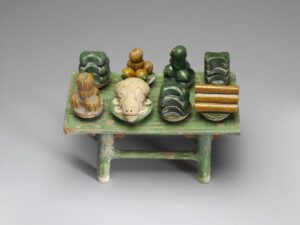
| BRIEF DESCRIPTION | 16th century Ming dynasty model of an altar table with eight little dishes of food (cakes, fruit and meat) neatly arranged in rows on it. |
| PHYSICAL DESCRIPTION | Earthenware model, with lead glazes, of an altar table with eight dishes of food on it. |
| DIMENSIONS |
|
| STYLE | Ming |
| GALLERY LABEL | Altar table with food dishes Ming dynasty 1550-1650 Earthenware with coloured glazes Museum no. FE.110-1996(2007) |
| OBJECT HISTORY | Bought from Robert McPherson |
| SUMMARY | Ming dynasty (1368-1644) funerary figures were intended to reflect the social status of the deceased. Ceramic replicas of servants, furniture and food are the most common types. The quantity of grave goods was closely related to the affluence of the deceased. The more wealthy the deceased the larger the number of funerary figures buried. |
Mingqi Pottery :
This piece is an example of Mingqi, objects made specifically for burial, to be taken with you to the afterlife. The `Terracotta Army` is the most famous example of this type of burial object. Mingqi objects represented people, houses, farms, granaries, livestock and indeed anything important from this world that would give you comfort and status in the next. The `Terracotta Army` were made life size and on a vast scale, reflecting the importance of the first emperor of China but most Mingqi objects were small models, far smaller than the object or indeed person they were meant to represent. Mingqi ceramics were not the only goods to appear in early Chinese tombs, objects that functioned were also buried, some of these had clearly been worn or even damaged, presumably these objects were prized possessions belonging to the deceased that might have been used on a daily basis.
